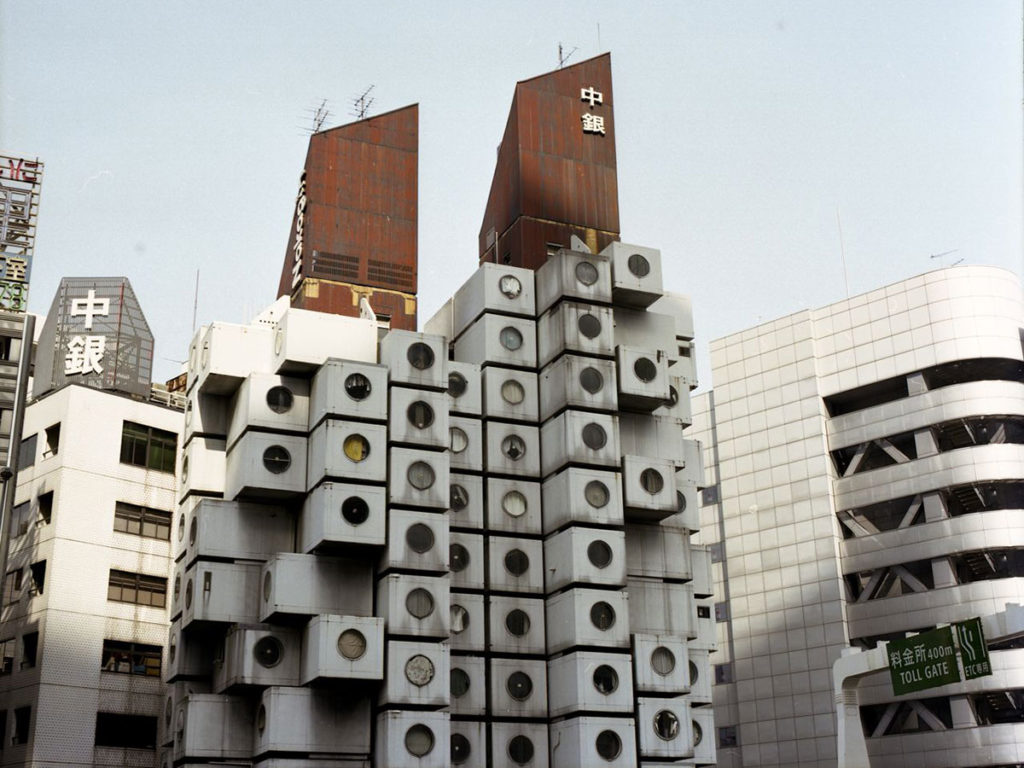Capsule Tower

This building is amazing and an object lesson in how not maintaining our modernist masterpieces are going to lead them to all fall apart very soon.
Tokyo’s Nakagin Capsule Tower, designed by 20th-century Metabolic Architecture proponent Kisho Kurokawa and completed in the early 1970s, will be disassembled and demolished this month. The first example in the world of capsule architecture — in which constituent units of the building can be removed and reinstalled — it is perhaps Kurokawa’s most famous building.
The decision caps over a decade of discussions on the building’s slated dismantlement, which Kurokawa opposed before he died in 2007 and which has spurred valiant preservation efforts such as ex-resident Masato Abe’s campaign to raise sufficient funds to purchase all its capsules, “Save Nakagin Tower.”
But the deteriorating condition of individual capsules and the failure to update them with newer ones, as was Kurokawa’s original intention, left the building practically uninhabitable. The asbestos insulation is reportedly dysfunctional, leaving the building overheated during the summer and chilly in the winter. Neither hot water nor cooking stoves are available in the capsules, and their circular washing machine-esque windows cannot be opened. A net covers the structure to prevent people on the street from being struck unawares by pieces falling off it.
Well that does seem problematic! But what a building!!!
The capsules, 140 in total, were proportioned with the ratio of a tatami mat in mind, an instance of Kurokawa’s attempt to marry Japanese traditionalism and futurism in his design. He liked to call this meeting of the ancient and the modern “antagonistic coexistence.” The capsules were meant to be used for a host of purposes — mini-offices, ateliers, hotels, homes, meeting rooms, or holiday cabins — and at just ten square meters in size, they were aimed to serve the modern traveling bachelor who might have found himself needing accommodations in the Ginza neighborhood of Tokyo. Each capsule came with built-in furniture, much of which would strike a contemporary renter or buyer as fantastically retro, including a bedside control console, a stereo tape deck, and calculators. Bathrooms are the size of airplane lavatories. Originally fashioned from shipping containers, the capsules appear more like control rooms than living environments today.
I don’t know, maybe there’s no room for a building like this in people’s lived experiences. But damn if it isn’t a cool idea and it deserves a better fate than decades of neglect and then demolishing.


